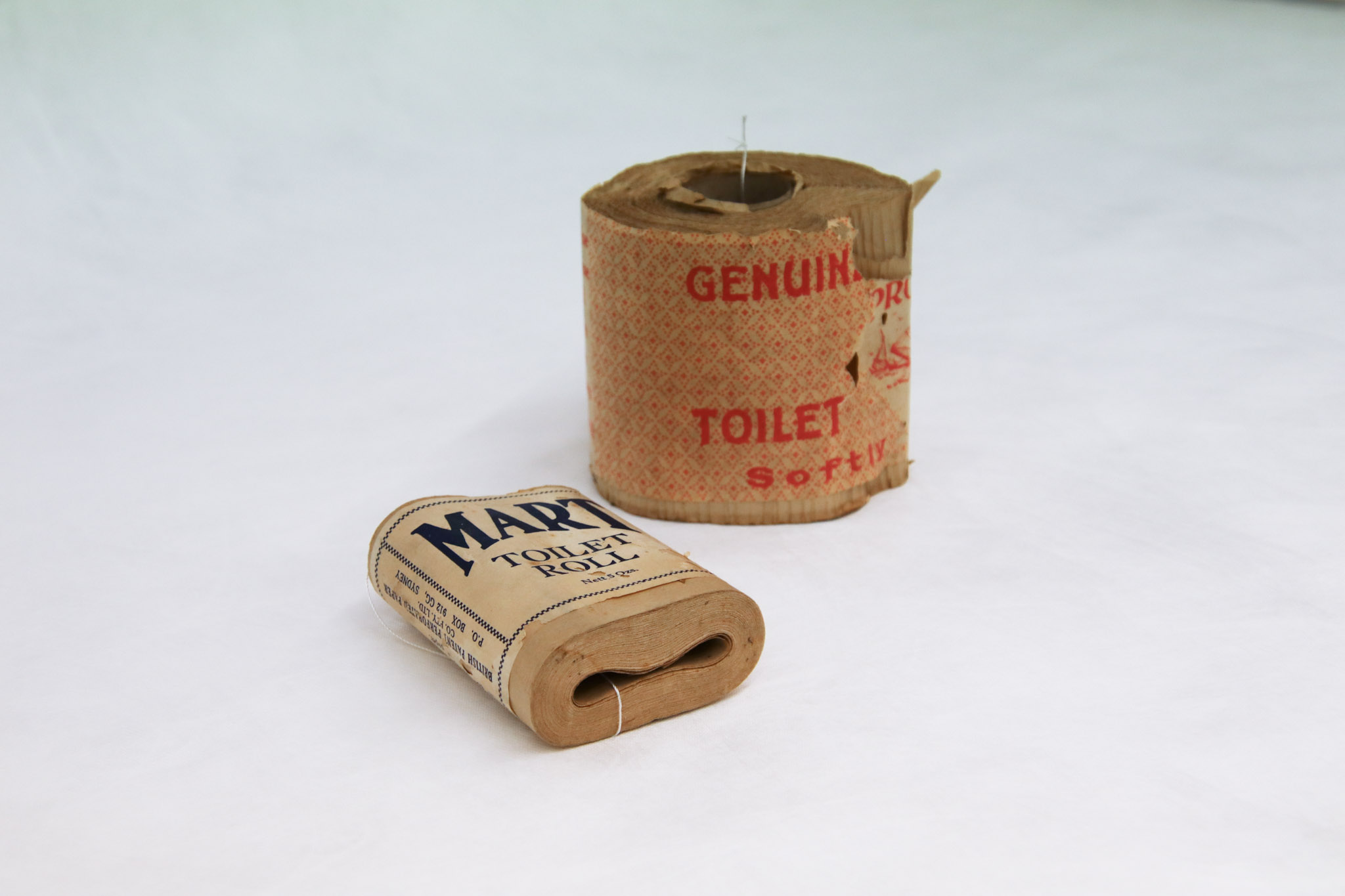QVMAG Collection on a roll for World Toilet Day
 Image: A Proas brand crepe toilet paper roll and a Mart single-ply toilet paper roll from the QVMAG collection. Photo: QVMAG.
Image: A Proas brand crepe toilet paper roll and a Mart single-ply toilet paper roll from the QVMAG collection. Photo: QVMAG.
We might think of the humble toilet roll as a necessity in our modern lives - but this was not always the case.
For World Toilet Day, QVMAG Assistant Curator Public History, Burcu Keane, shared two artefacts in the museum's collection that are among the rarest in the world, as well as providing historical insights into how people across the world dealt with their bathroom habits.
Paper was used as a sanitary product from as early as the 6th century. "We know paper originated in China," said Keane. "And we know the earliest references to toilet paper come from China.
"In 589 AD, scholar Yen Chih-Thui wrote, 'Paper on which there are quotations or commentaries from the Five Classics or the names of sages, I dare not use for toilet purposes,'" she said.
Elsewhere across the world, it was a different story. "Before the invention of commercial toilet paper, people used all sorts of things," said Keane. "Vikings used sheep's wool and Inuits used tundra moss. Peasants used hay, French royalty used lace, and colonial Americans used corn leaves."
The introduction of newspapers changed bathroom habits in Western society. "And, yesterday's news was often utilised in a creative way," she said with a smile. "They were cut into sheets and hung together with fencing wire, and hung on a wall in the backyard dunny."
Image: A Proas brand crepe toilet paper roll and a Mart single-ply toilet paper roll from the QVMAG collection. Photo: QVMAG.
Yet, as publishing companies developed their printing processes, they began producing glossy newspapers. "People were disappointed," noted Keane. "They realised it didn't work as well, and it also blocked the sewers. So, people had to come up with more creative ways."
This led to the development of commercial toilet paper, 'Medicated Paper, for the Water-Closet', first sold by Joseph Gayetty in New York in 1857.
Keane noted the initial public reaction to the introduction of this revolutionary new product. "Interestingly, Victorian morals often stopped people from buying toilet papers in shops," she said. "People didn't like referring to their own bodily functions.
"And so, when the first toilet papers were sold, the company called them 'therapeutic papers' because they were covered with aloe and claimed to cure sores."
The companies used various strategies to encourage people to buy their products. Keane said, "They were trying to educate people on how toilet paper was healthier and better. At times, they were terrifying people about what would happen if they didn't buy and use their product."
This marketing tactic is clearly demonstrated with one of the artefacts in the museum's collection. "This is a great example, on this Proas crepe toilet paper," she said. "We have an advertisement saying, 'Doctors advise against the use of printed newspapers and other harsh papers. Study health first.'
"So, this crepe toilet paper we have in our collection is a fantastic example of how people how people were convinced to use these newly produced commercial products."
The toilet paper rolls are part of QVMAG's Kaw Collection, donated to the museum in 2005. The significant bequest included written archives, photographs and objects - including grocery items - relating to the Kaw family and their business, the Sun Hung Ack & Co shop in St. John St, Launceston.
Image: A Proas brand crepe toilet paper roll and a Mart single-ply toilet paper roll from the QVMAG collection. Photo: QVMAG.
The shop's founder, Chin Kaw, migrated to Tasmania in 1879 from the Guandong province in China. The family-owned business operated until the 1950s, serving as a popular store and a hub for the local Chinese community.
"These toilet papers were sold by the Kaw family in their shop on St. John Street," said Keane. "The Mart toilet roll is a single-ply paper. Up until 1942, toilet papers was single-ply.
"Two-ply toilet papers were first sold in London in 1942. And from then on, toilet paper was two-ply and became softer and more absorbent. They were called thirsty papers."
The museum's artefacts are assumed to pre-date the 1940s. Keane noted, "They're older than the toilet paper called Medico Crepe, dated 1947, held in Museums Victoria.
"The two toilet papers in our collection definitely pre-date the 1940s - so ours are some of the earliest examples of toilet paper in museum collections."